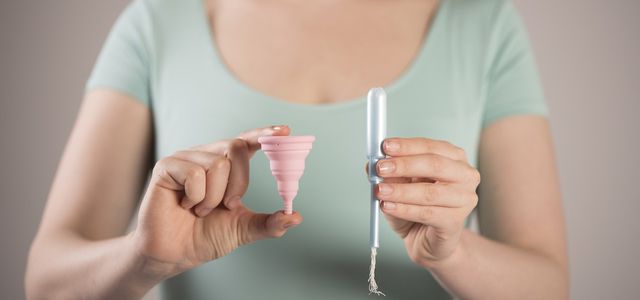
Toxic Shock Syndrome (TSS) is a very rare but serious condition. It is particularly common during menstruation. You can find out more about symptoms, prevention and therapy in this article.
Toxic Shock Syndrome is a disease usually caused by toxic substances of the bacterial species staphylococci is triggered. TSS is also known as tampon disease. This is because it’s particularly common in menstruating women, who, according to one study, are very absorbent tampons used and did not change them for a long period of time.
However, toxic shock syndrome can also affect men, children, and nonmenstruating women. According to the study, other factors that increase the risk of the disease include:
- postoperative infections
- burns
- soft tissue infections
- Injuries from certain foreign objects (such as Dyalise catheters or nasal bandages)
Diaphragms or contraceptive caps that remain in the vagina for too long also promote the development of the disease, albeit only to a small extent. According to a 2018 study by the American Society for Microbiology, misuse of menstrual cups increase the risk of TSS.
In general, however, there is no reason to panic: Toxic shock syndrome occurs only very rarely. In the United States, for example, according to the former study, only 0.8 to 3.4 people out of 100,000 are affected by the disease. In addition, you can usually prevent the disease with simple hygiene tips.
Toxic shock syndrome: symptoms and therapy

(Photo: CC0 / Pixabay / Patricia Moraleda)
Ross and Shoff name the following as typical symptoms of toxic shock syndrome:
- fever
- drop in blood pressure
- sunburn-like rash
- nausea and Vomit
- muscle pain
If the disease is not treated promptly and professionally, it can also lead to serious damage to almost all organ systems. As a rule, however, doctors can treat toxic shock syndrome quickly and easily. Antibiotics are often used in therapy.
So if you suddenly suffer from the symptoms mentioned above in an apparently inexplicable way and at the same time belong to the risk group, for example because you forgot to change your tampon, you should remove it immediately and seek medical advice.
Prevention: You should pay attention to this
To prevent toxic shock syndrome, as a menstruating woman, you should change your tampon regularly during your menstrual period. You should also wash your hands thoroughly before entering or exiting. This also applies to the use of diaphragms or other barrier methods of contraception.
Also make sure to remove these contraceptives after intercourse and to clean them thoroughly afterwards. The American Society for Microbiology also recommends that menstrual cups should also be washed out thoroughly after use and preferably boiled before you use them again.
In general, if you’ve had toxic shock syndrome before, you should be more careful with tampons and other foreign objects in your vagina. It may even be advisable to avoid it altogether in this case. It is best to get medical advice on this.
A sustainable alternative to tampons, for example, are reusable cloth pads. You can find out how you can easily make these yourself here: Sew cloth pads yourself – zero waste during menstruation. You can also find more information about alternative menstrual products in our Menstrual Leaderboard. And you can get there without any tools Free bleeding out.
Read more on Techzle.com:
- Female cycle: what happens in the different phases
- Usually better: Alternatives to whether, Always & Co.
- Premenstrual Syndrome: Meaning, Symptoms and Home Remedies